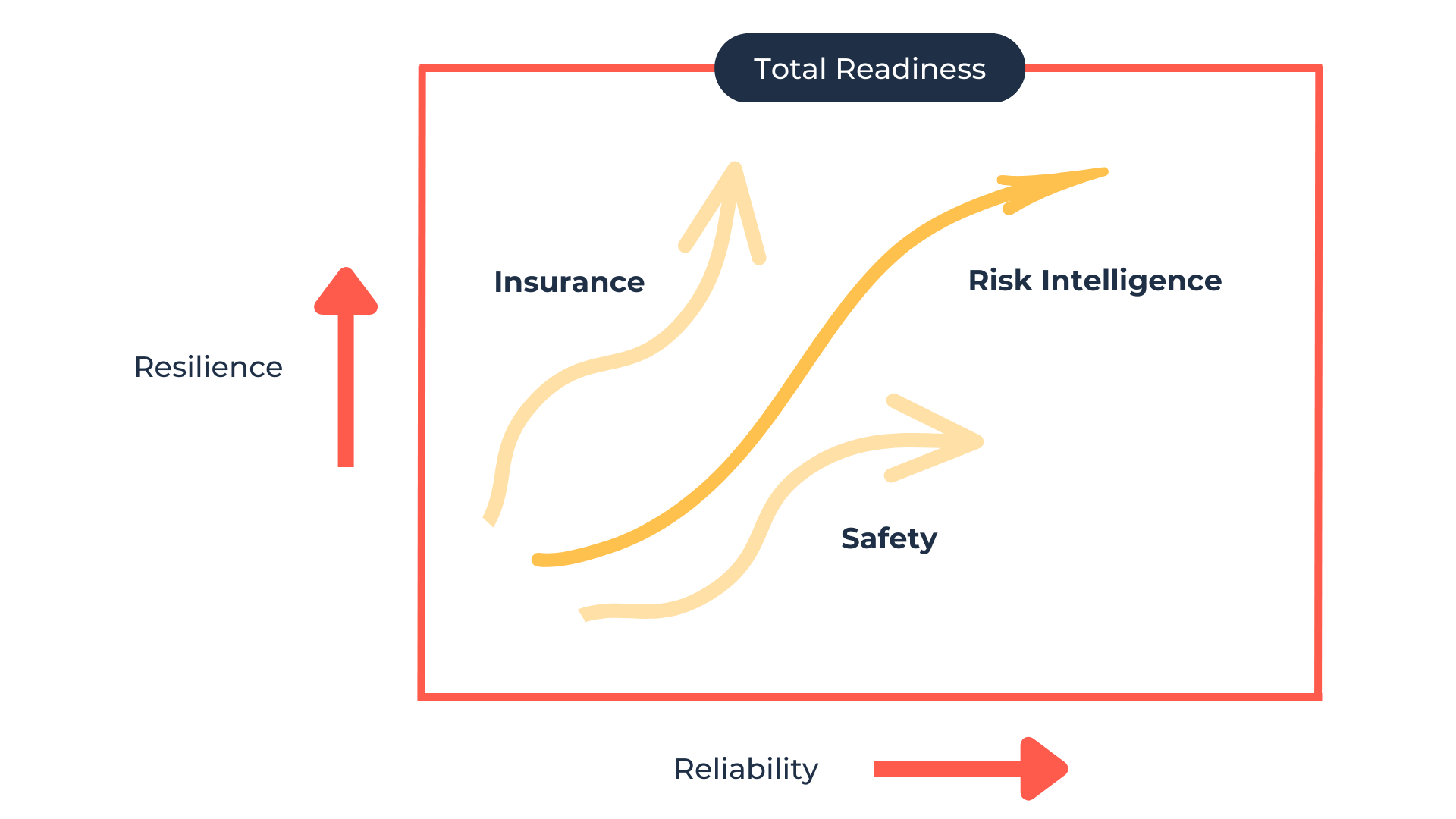Why Brands Need Risk Intelligence in 2023
Risk intelligence, more traditionally referred to as risk management, can be interpreted in many different ways, from collecting, processing, integrating, analyzing, and assessing available information on the nature of the risk. However, a misconception is thinking they are the same thing. By definition, Risk Intelligence differs quite acutely from risk management in that it enables actionable information, while risk management is about operating tools to identify and mitigate risk factors.
Even still, aren’t they more or less the same?
But that’s where I’d like to go on a limb and argue that Risk Intelligence is increasingly vital for brands to adopt in 2023. Today, with increasing perplexities and conditions happening around your business landscape, the challenge has never been more paramount for brands to understand what is happening, not to mention issues bound to happen.
The possible analogy I can give you is this. Imagine you’re at a railway station – you’re racing against time to catch the right train to your destination. There are two trains that you can consider boarding. However, you might not know before boarding that one of the trains there is soon to be a possible delay on its route several stations ahead. Now, with the right information on hand, would you have proactively taken steps to avoid the wrong train?
That’s risk intelligence, in a gist, of taking consolidated information to make an actionable impact on current and emergent company risks.
What is Risk Intelligence, Actually?
But if you’re seeking a complete definition of risk intelligence, Exiger, a global risk consultancy, describes risk intelligence as the “solution that helps businesses regularly identify and avoid or manage the impact and duration of stakeholder risk incidents.”
On top of that, risk intelligence is a continuous and validated process of accounting for “potential hazards from all industry sectors —from cyber risks to financial risks, supply chain failure, extreme weather events, or customer dissatisfaction.”
That said, risk intelligence is integral if you need to keep an eye on looming macro and micro threats in your environment, as these risk factors can be highly disruptive to your business priorities in the long term. Capturing the information to act on them now will mean the difference between an empowered, proactive strategy ready to meet challenges and a reactive strategy responding to crises as needed.
Adapting to an Ever-Changing Business Landscape
While being reactive is not a bad thing, it does have its disadvantages over a proactive approach. The current evolution of the business landscape requires businesses to operate dynamically, as observed in the aftermath of COVID-19, the ongoing Russian-Ukraine conflict, and the adoption of AI applications.
Needless to say, being predominantly reactive in your strategy means waiting until a risk has already materialized before addressing it. This level of reactivity can be seen as disruptive, especially as unexpected crises could threaten business operations, financial stability, and brand image. Taking on risks in this approach would pose significant and costly compromises than if you had taken steps earlier to prevent or mitigate the risk.
In contrast, a proactive approach to risk intelligence involves anticipating potential risks and taking action to prevent or minimize their impact before they occur. This approach allows organizations to identify potential risks and be mindful of the steps to address them before they become major problems down the road.
Is it not easier to allocate the resources ahead of time, such as prioritizing R & D in the next quarter to support innovation and close technological gaps against new players or start auditing earlier in response to an industry-wide scandal?
As seen by how fast word moves on social, it may be minutes before people start grouping your brand with a bad bunch.
Acquiring strong risk intelligence gives brands the resilience to navigate market hurdles reliably without compromising their operational goals.
Leo Tilman said it best, “risk intelligence is a cornerstone of organizational agility and performance improvement.” To ensure the longevity of your business's operations, it is imperative to adopt a proactive risk intelligence strategy that identifies and mitigates potential risks before they can cause harm.
The Importance of Risk Intelligence for Brands
How should brands consider risk intelligence in their strategy and planning? Risk intelligence is all about undertaking identified risks in stride and building contingencies to mitigate them. Brands that fail to consider risk intelligence are subjected to reputational damage, financial losses, legal issues, and other negative consequences.
To incorporate risk intelligence, brands should first conduct a risk assessment to identify potential risks and their likelihood of occurrence. This can involve:
- Analyzing market trends
- Assessing competitive threats
- Evaluating regulatory compliance requirements
- Developing a risk management plan that outlines how they will mitigate identified risks, including contingency plans for dealing with unexpected events
One important aspect of risk intelligence is monitoring and staying up-to-date on emerging risks and trends. With media being a broad spectrum ranging from traditional to digital and online sources, it’s essential to understand where your audience comes from. That way, you can narrow down the channels to monitor potential threats, monitoring brand complaints to bad buzz flagged by key opinion leaders in your industry.
Brands should regularly review their risk assessment and management tools to ensure they are current and effective in addressing new and evolving risks, positioning themselves without worrying about disruption.
How Risk Intelligence Has Benefited Businesses in the Past
✈️ Singapore Airlines:
Singapore Airlines is known for its high safety standards and excellent customer service, resulting from its investment in risk intelligence. The company has implemented robust safety protocols and emergency response plans to ensure the safety of its passengers and crew. It regularly monitors and analyzes potential risks to its operations.
🚕 Grab:
Grab is a ride-hailing and food delivery platform that operates in Southeast Asia. The company has invested in risk intelligence to identify and mitigate potential risks to its operations, such as cybersecurity threats and supply chain disruptions. For example, during the COVID-19 pandemic, Grab implemented risk mitigation measures such as contactless delivery and safety protocols for its drivers and customers.
🚚 DHL:
DHL is a logistics company that operates in Southeast Asia and other regions. The company has invested in risk intelligence to identify and mitigate potential risks to its operations, such as supply chain disruptions and transportation delays. For example, DHL has implemented contingency plans and alternative transportation routes to ensure the timely delivery of goods, even during natural disasters or other disruptions.
There is no forecasting what will happen in a year. However, what brands can do now is take active steps to address the challenges of the current business landscape – where it concerns their economic, technological, and operational outlook, among others.
Different Types of Risk Intelligence Solutions Available
Now that you’re ready to put some thought into how risk intelligence is supposed to work, you’d be amazed to know there are multiple types of risk intelligence tools available online, depending on the scale and types of risk you require information on.
- Risk assessment: identify potential risks by analyzing internal and external factors affecting operations, such as political instability, cybersecurity threats, and supply chain disruptions.
Examples of such tools include risk assessment software, data analytics platforms, and risk intelligence dashboards. - Threat monitoring: monitor potential threats in real time, such as social media chatter, news reports, and cybersecurity alerts.
Examples include social media monitoring software, threat intelligence platforms, and security information and event management (SIEM) tools. - Business continuity: develop and implement contingency plans to ensure business continuity during a disruption, such as a natural disaster, cyber attack, or pandemic.
Examples include disaster recovery software, crisis management platforms, and business continuity planning tools. - Compliance: deliver compliance with legal and regulatory requirements, such as data protection laws, anti-corruption regulations, and labor standards.
Examples include compliance management software, risk-based auditing tools, and regulatory intelligence platforms. - Reputation management: monitor and manage brand reputation by analyzing public sentiment, media coverage, and customer feedback.
Examples include media monitoring software, sentiment analysis tools, and brand management platforms.
Whatever solution you decide on, take heed to formulate a standard policy and assemble a team to combat any technological mishaps, making sure your risk intelligence model is working to nip threats in the bud all year round.
First Step in Risk Monitoring
Social media is a treasure trove of information, with millions of conversations happening every second. Gathering risk and market intelligence in social media is crucial to protecting your brand reputation against detractors and social flak when you least expect it.
Brands can use social media monitoring for risk intelligence by analyzing online conversations, identifying potential threats and reputation risks, and developing strategies to mitigate those risks, ultimately helping to protect their brand reputation and improve their overall risk management approach.
Written by Jared Silitonga
Jared is a member of the APAC marketing team at Digimind. Besides hashing insights into content, he loves a good ol' sit-down of board gaming and film rhetoric. Catch him diving in other shenanigans on Instagram @jarrds

